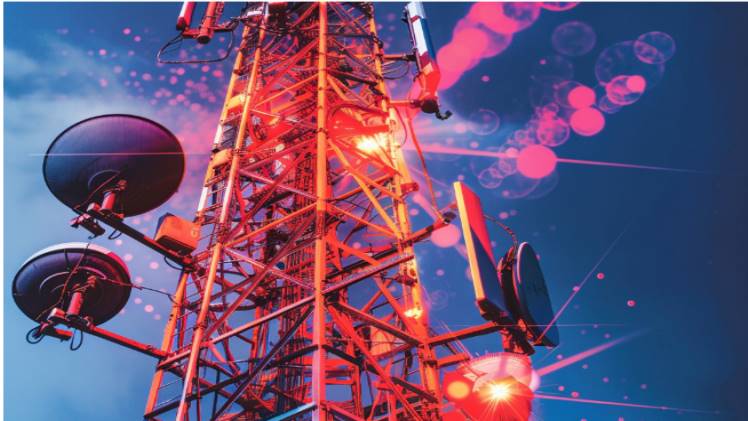Introduction
As 5G networks continue to expand their reach around the world, concerns about the potential health impacts of electromagnetic radiation are on the rise. With higher-frequency waves and increased transmission capacity, 5G technology promises lightning-fast internet speeds and improved connectivity. However, there are questions about the potential long-term effects on human health.
While scientific research on the topic is still evolving, some studies suggest that exposure to electromagnetic radiation emitted by 5G networks could potentially have adverse health effects. Concerns range from an increased risk of cancer to disruptions in the immune and nervous systems. However, it’s important to note that most experts agree that the current evidence does not substantiate these claims.
Companies deploying 5G technology are working closely with regulatory bodies and health organizations to ensure the safety of their networks. goltogel Furthermore, governments worldwide have set limits on the level of electromagnetic radiation exposure that is deemed safe.
As the deployment of 5G networks accelerates, it is crucial to stay informed about the potential health impacts. This article delves into the latest scientific research and explores the ongoing debate surrounding the impact of electromagnetic radiation from 5G networks on human health.
Understanding Electromagnetic Radiation and Its Potential Impact on Human Health
Electromagnetic radiation is a form of energy that travels through space in the form of waves. It includes a wide range of frequencies, from radio waves to X-rays and gamma rays. Electromagnetic radiation is present in our everyday lives, emitted by various sources such as mobile phones, Wi-Fi routers, and power lines. It is important to understand that electromagnetic radiation exists on a spectrum, with different frequencies having different properties.
The concern surrounding 5G networks stems from the higher-frequency waves they utilize compared to previous generations of mobile networks. These higher-frequency waves, known as millimeter waves, have shorter wavelengths and can carry more data. However, some believe that these waves may penetrate the human body more deeply and potentially cause harm.
To assess the potential impact of electromagnetic radiation on human health, researchers conduct studies that examine the effects of exposure on biological systems. It is worth noting that there is a significant body of scientific literature on the topic, but the results are inconclusive. While some studies suggest a possible link between electromagnetic radiation and health effects, others do not find any significant associations.
Debunking Myths and Misconceptions about 5G Networks and Health Risks
Amidst the concerns about 5G networks and health risks, various myths and misconceptions have emerged. One common misconception is that 5G networks emit significantly higher levels of electromagnetic radiation compared to previous generations. However, this is not entirely accurate.
While it is true that 5G networks use higher-frequency waves, they operate at lower power levels and have shorter range compared to previous generations. This means that individuals are likely to be exposed to lower levels of electromagnetic radiation from 5G networks compared to older technologies.
Another myth surrounding 5G networks is that they cause COVID-19 or weaken the immune system. These claims are entirely baseless and have been debunked by numerous scientific studies and health organizations. COVID-19 is caused by the SARS-CoV-2 virus, which is unrelated to electromagnetic radiation.
It is important to rely on credible sources of information and scientific research when evaluating the potential health risks associated with 5G networks. Misinformation can lead to unnecessary fear and hinder the adoption of beneficial technologies.
Research Studies on the Health Effects of Electromagnetic Radiation

A considerable amount of research has been conducted to investigate the potential health effects of electromagnetic radiation, including studies specifically focused on 5G networks. However, the results of these studies have been mixed, and no consensus has been reached.
Some studies suggest that long-term exposure to electromagnetic radiation, including that emitted by 5G networks, may have adverse health effects. These effects could include an increased risk of cancer, changes in DNA, disruptions in the immune system, and impacts on reproductive health.
On the other hand, many studies have not found any significant health risks associated with exposure to electromagnetic radiation within the limits set by regulatory bodies. These studies emphasize that the current evidence does not support claims that 5G networks pose a significant threat to human health.
It is important to acknowledge that research on the health effects of 5G networks is an ongoing process. As new studies are conducted and more data becomes available, our understanding of the potential risks and benefits will continue to evolve.
Government Regulations and Safety Standards for 5G Networks
To ensure the safety of 5G networks and protect public health, governments around the world have established regulations and safety standards regarding electromagnetic radiation exposure. These regulations are based on established scientific research and recommendations from international health organizations.
Regulatory bodies, such as the Federal Communications Commission (FCC) in the United States, set specific limits on the amount of electromagnetic radiation that devices and networks can emit. These limits are designed to prevent harmful effects and are regularly reviewed and updated as new scientific evidence emerges.
In addition to government regulations, independent organizations, such as the International Commission on Non-Ionizing Radiation Protection (ICNIRP), play a crucial role in establishing safety guidelines for electromagnetic radiation exposure. These organizations assess the available scientific evidence and provide recommendations to ensure public safety.
It is important for individuals and communities to be aware of these regulations and safety standards, as they provide assurance that 5G networks are being deployed with human health in mind.
Tips for Minimizing Exposure to Electromagnetic Radiation
While the existing evidence suggests that 5G networks pose minimal health risks, individuals who are concerned about electromagnetic radiation exposure can take certain precautions to minimize their exposure.
One simple step is to maintain a safe distance from 5G network infrastructure, such as cell towers and antennas. The intensity of electromagnetic radiation decreases rapidly with distance, so keeping a reasonable distance can help reduce exposure levels.
Using hands-free devices, such as wired headsets or speakerphones, can also minimize direct exposure to electromagnetic radiation emitted by mobile devices. These devices allow individuals to keep their phones away from their bodies while using them.
Additionally, reducing the amount of time spent on mobile devices and using them in areas with good signal strength can help limit exposure. When not in use, it is advisable to keep mobile devices away from the body, such as in a bag or on a desk, rather than in a pocket.
While these tips can help reduce exposure to electromagnetic radiation, it is important to remember that the current scientific consensus suggests that the risks associated with 5G networks are minimal.
Potential Long-Term Health Implications of 5G Networks
As 5G networks continue to be deployed and used worldwide, concerns about potential long-term health implications persist. However, it is crucial to understand that long-term effects can only be accurately assessed over time as more data becomes available.
Researchers are conducting ongoing studies to monitor the health effects of 5G networks and electromagnetic radiation. Long-term observational studies are necessary to evaluate any potential associations between exposure to 5G networks and adverse health outcomes, such as cancer or reproductive issues.
It is worth noting that similar concerns were raised when previous generations of mobile networks were introduced, including 2G, 3G, and 4G. However, extensive research conducted over the years has not found any conclusive evidence linking these technologies to significant health risks.
While it is important to remain vigilant and continue monitoring the potential health implications of 5G networks, it is equally important to rely on scientific research and evidence when assessing these risks.
Expert Opinions and Perspectives on the Safety of 5G Networks
Experts from various fields, including telecommunications, health, and engineering, have weighed in on the safety of 5G networks. The consensus among these experts is that 5G networks, when deployed within the established safety guidelines, pose minimal health risks.
Organizations such as the World Health Organization (WHO) and the International Agency for Research on Cancer (IARC) have conducted extensive reviews of the scientific evidence. These organizations have concluded that the current evidence does not support claims that 5G networks are significantly harmful to human health.
It is important to rely on credible sources and expert opinions when evaluating the safety of 5G networks. Experts in relevant fields have the knowledge and expertise to interpret scientific research accurately and provide informed perspectives.
Addressing Concerns and Promoting Public Awareness about 5G Networks and Health
Addressing concerns and promoting public awareness about the potential health impacts of 5G networks is essential to ensure informed decision-making and alleviate unnecessary fears.
Government agencies, health organizations, and telecommunication companies have a responsibility to communicate accurate information to the public. This includes providing accessible resources that explain the science behind 5G networks and addressing common misconceptions.
Engaging in open and transparent dialogue with the public is vital to address concerns effectively. It is important to listen to the public’s concerns, acknowledge their fears, and provide evidence-based information to help alleviate those concerns.
Additionally, ongoing research and monitoring of the health effects of 5G networks should continue to be prioritized. This will help ensure that any potential risks are identified and addressed promptly.
Conclusion: Balancing the Benefits and Potential Risks of 5G Networks
In conclusion, while concerns about the potential health impacts of electromagnetic radiation from 5G networks exist, the current scientific evidence does not substantiate significant risks. Extensive research and ongoing monitoring have not found any conclusive evidence linking 5G networks to adverse health effects within the established safety guidelines.
Governments and regulatory bodies are working closely with telecommunication companies to ensure that 5G networks are deployed safely and within the recommended limits for electromagnetic radiation exposure. It is important for individuals to stay informed, rely on credible sources, and understand the existing safety standards.
As the deployment of 5G networks continues, it is crucial to strike a balance between enjoying the benefits of this advanced technology and addressing any potential risks. Ongoing research, public awareness, and open dialogue will contribute to a better understanding of the impact of electromagnetic radiation from 5G networks on human health.
